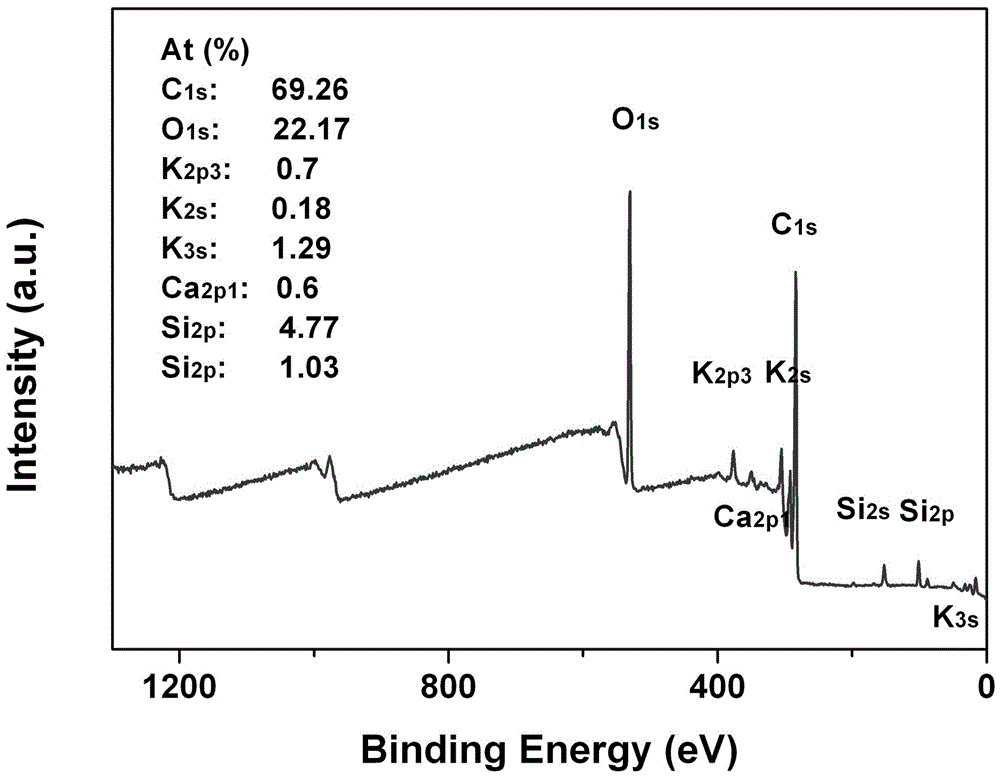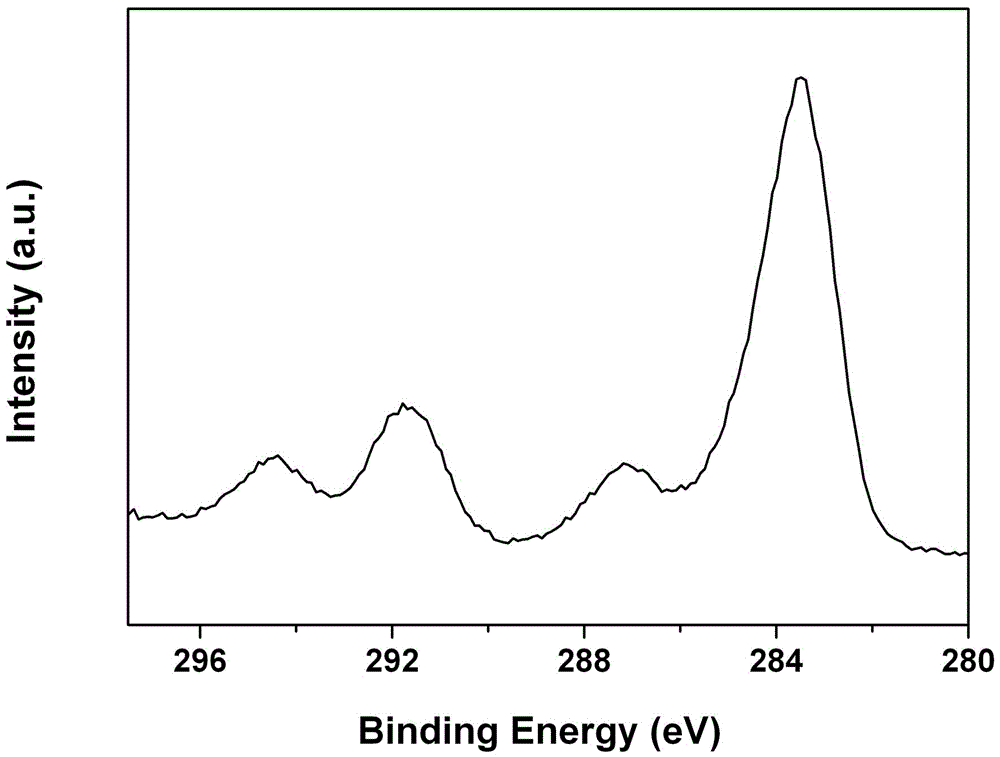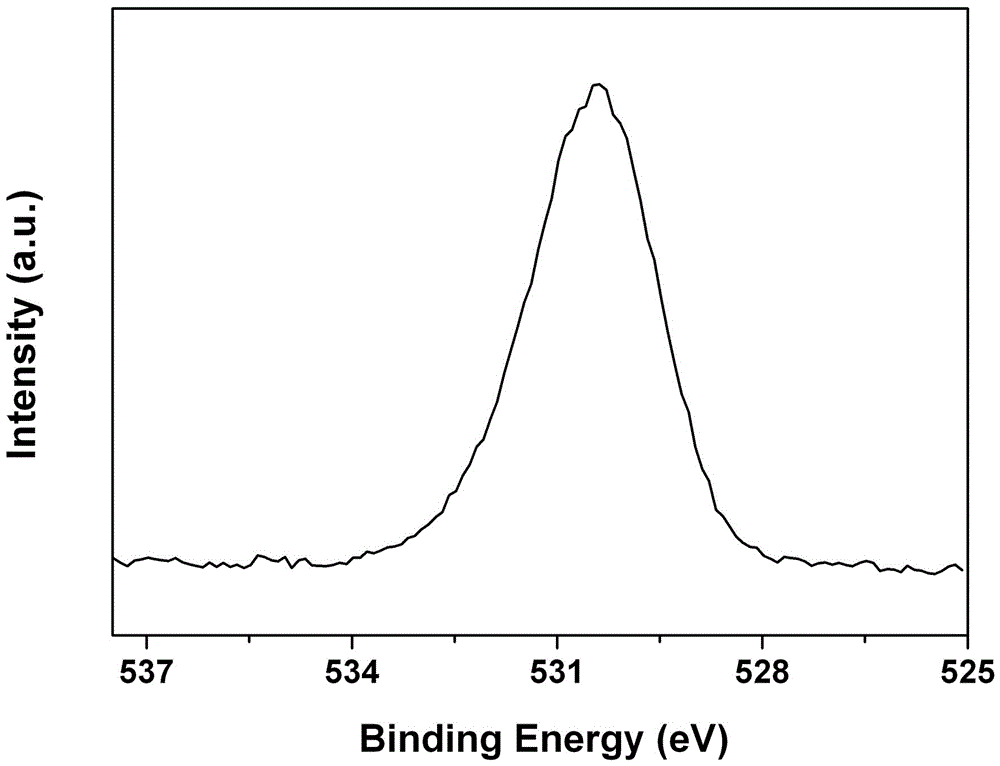A method of preparing fluorescent carbon dots by adopting waste sugarcane molasses as a raw material and application of the fluorescent carbon dots
A technology of fluorescent carbon dots and waste molasses, which is applied in the fields of biomedicine, food testing, and biological materials, can solve problems such as affecting the development of children's liver and kidneys, low IQ in children, and interfere with metabolism in the body, and achieves low cost, low price, and preparation. The effect of simple process technology
- Summary
- Abstract
- Description
- Claims
- Application Information
AI Technical Summary
Problems solved by technology
Method used
Image
Examples
Embodiment 1
[0061] A preparation method for synthesizing fluorescent carbon dots using sugarcane waste molasses as a raw material comprises the following steps:
[0062] (1) Weighing 4.0 g of sugarcane molasses, putting it into a polytetrafluoroethylene-lined reactor, reacting at 240°C for 13 h, cooling to room temperature, and obtaining sugarcane molasses after pyrolysis;
[0063] (2) Add 4 mL of deionized water to the high-temperature cracked sugarcane molasses, and ultrasonicate at 80 Hz for 4 minutes to obtain a sugarcane molasses solution; the sugarcane molasses is the residue left after crystallization and separation of white sugar in the sugarcane sucrose production process black viscous liquid;
[0064] (3) Pass the sugarcane waste molasses solution through a 0.22 μm water phase filter membrane, filter it repeatedly three times, and collect the golden yellow filtrate;
[0065] (4) Drop the golden yellow filtrate solution into 200 mL of absolute ethanol for precipitation, and prec...
Embodiment 2
[0067] A preparation method for synthesizing fluorescent carbon dots using sugarcane waste molasses as a raw material comprises the following steps:
[0068] (1) Weighing 5.0 g of sugarcane molasses, putting it into a polytetrafluoroethylene-lined reactor, reacting at 250°C for 12 hours, and cooling to room temperature to obtain high-temperature cracked sugarcane molasses;
[0069] (2) Add 5 mL of deionized water to the high-temperature cracked sugarcane molasses, and ultrasonicate at 100 Hz for 3 minutes to obtain a sugarcane molasses solution; black viscous liquid;
[0070] (3) Pass the sugarcane waste molasses solution through a 0.22 μm water phase filter membrane, filter it repeatedly three times, and collect the golden yellow filtrate;
[0071] (4) Drop the golden yellow filtrate solution into 200 mL of absolute ethanol for precipitation, and precipitate a brown solid, centrifuge at a speed of 6000 round / min for 5 minutes, collect the clear solution, remove absolute etha...
Embodiment 3
[0073] A preparation method for synthesizing fluorescent carbon dots using sugarcane waste molasses as a raw material comprises the following steps:
[0074] (1) Weighing 6.0 g of sugarcane molasses, putting it into a polytetrafluoroethylene-lined reactor, reacting at 260°C for 11 hours, cooling to room temperature, and obtaining high-temperature cracked sugarcane molasses;
[0075] (2) Add 6 mL of deionized water to the sugarcane waste molasses after pyrolysis, and ultrasonicate at 120 Hz for 2 minutes to obtain a sugarcane waste molasses solution; the sugarcane waste molasses is the remaining after crystallization and separation of white sugar in the sugarcane sucrose production process waste molasses;
[0076] (3) Pass the sugarcane waste molasses solution through a 0.22 μm water phase filter membrane, filter it repeatedly three times, and collect the golden yellow filtrate;
[0077] (4) Drop the golden yellow filtrate solution into 200 mL of absolute ethanol for precipita...
PUM
 Login to View More
Login to View More Abstract
Description
Claims
Application Information
 Login to View More
Login to View More - R&D
- Intellectual Property
- Life Sciences
- Materials
- Tech Scout
- Unparalleled Data Quality
- Higher Quality Content
- 60% Fewer Hallucinations
Browse by: Latest US Patents, China's latest patents, Technical Efficacy Thesaurus, Application Domain, Technology Topic, Popular Technical Reports.
© 2025 PatSnap. All rights reserved.Legal|Privacy policy|Modern Slavery Act Transparency Statement|Sitemap|About US| Contact US: help@patsnap.com



